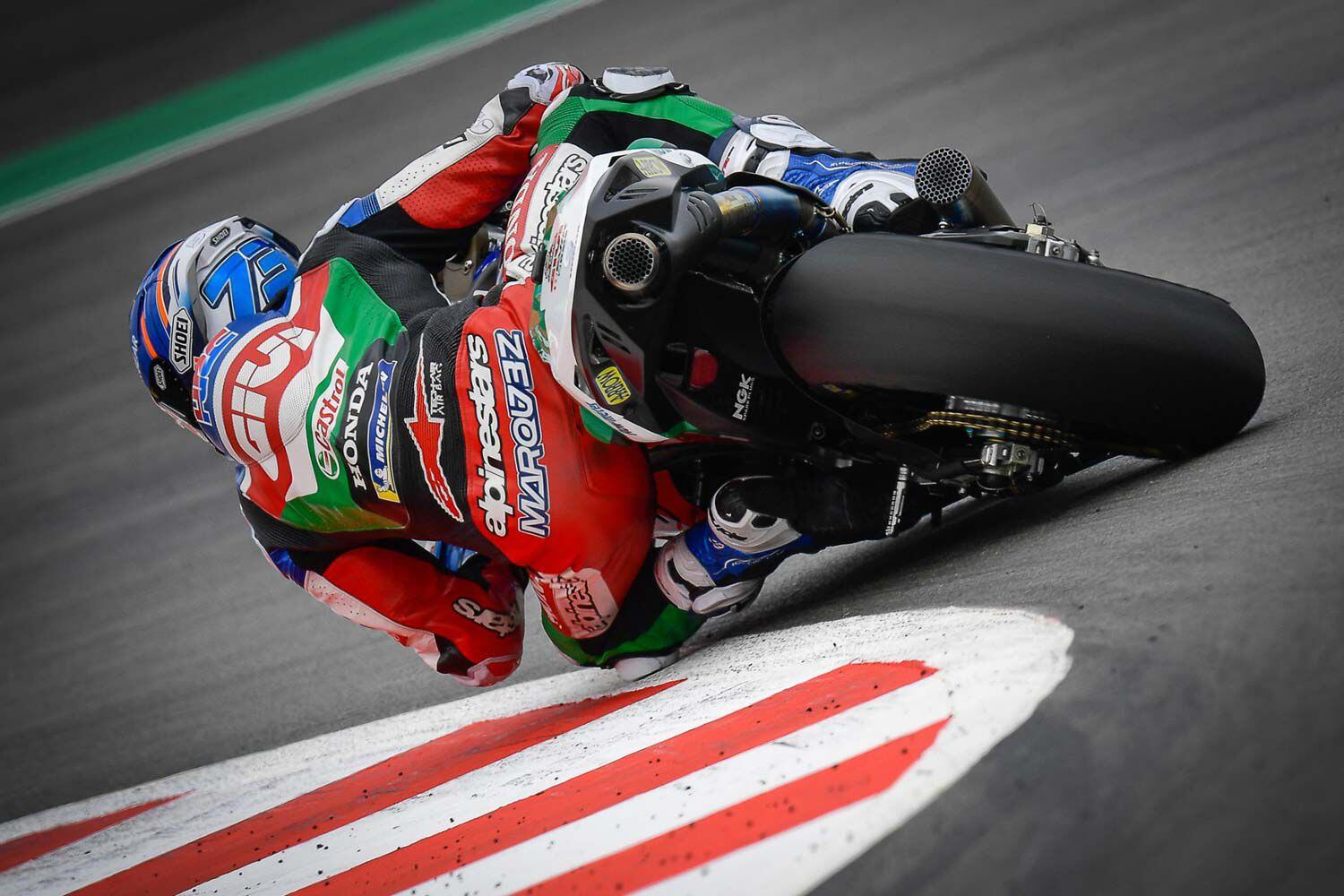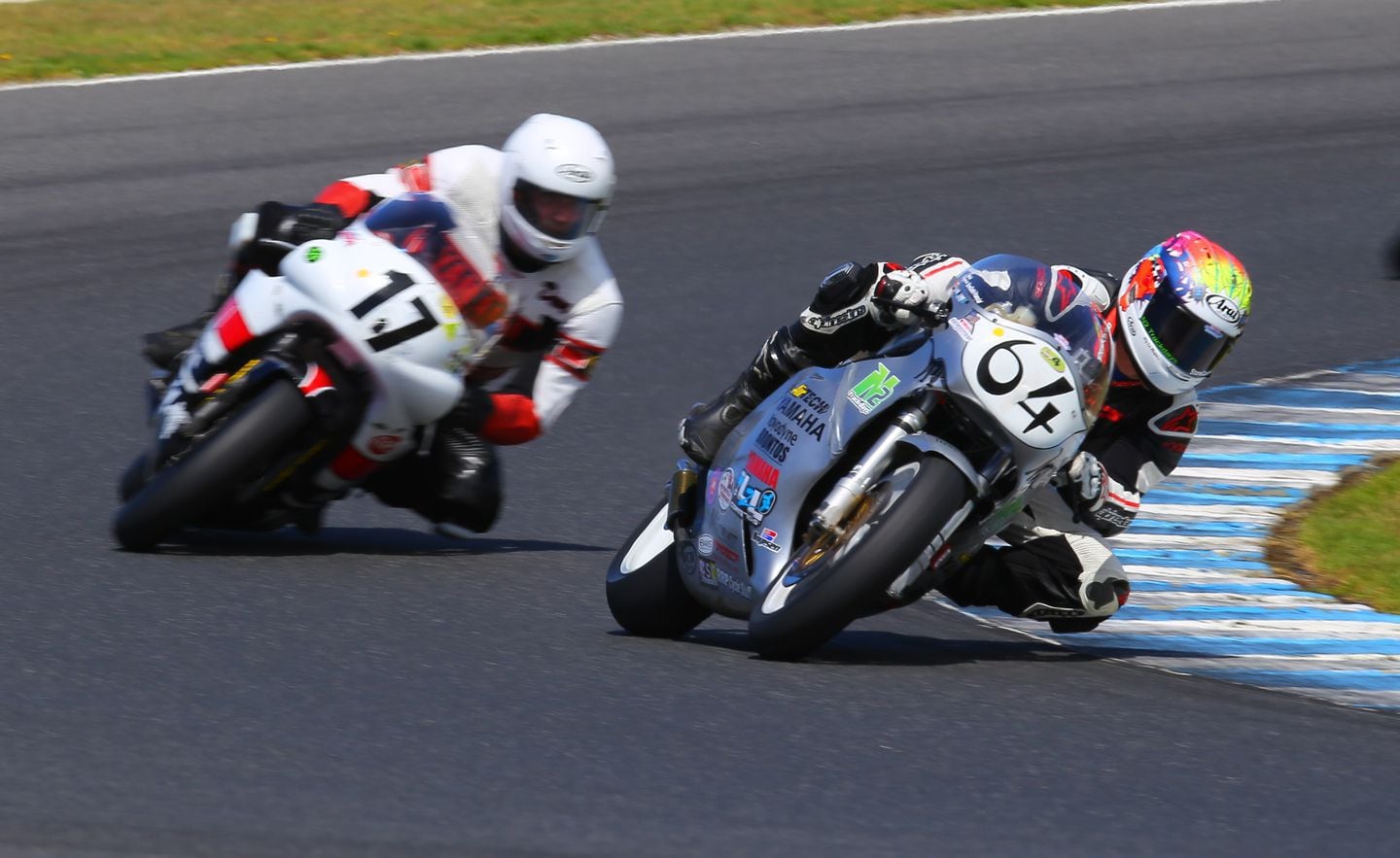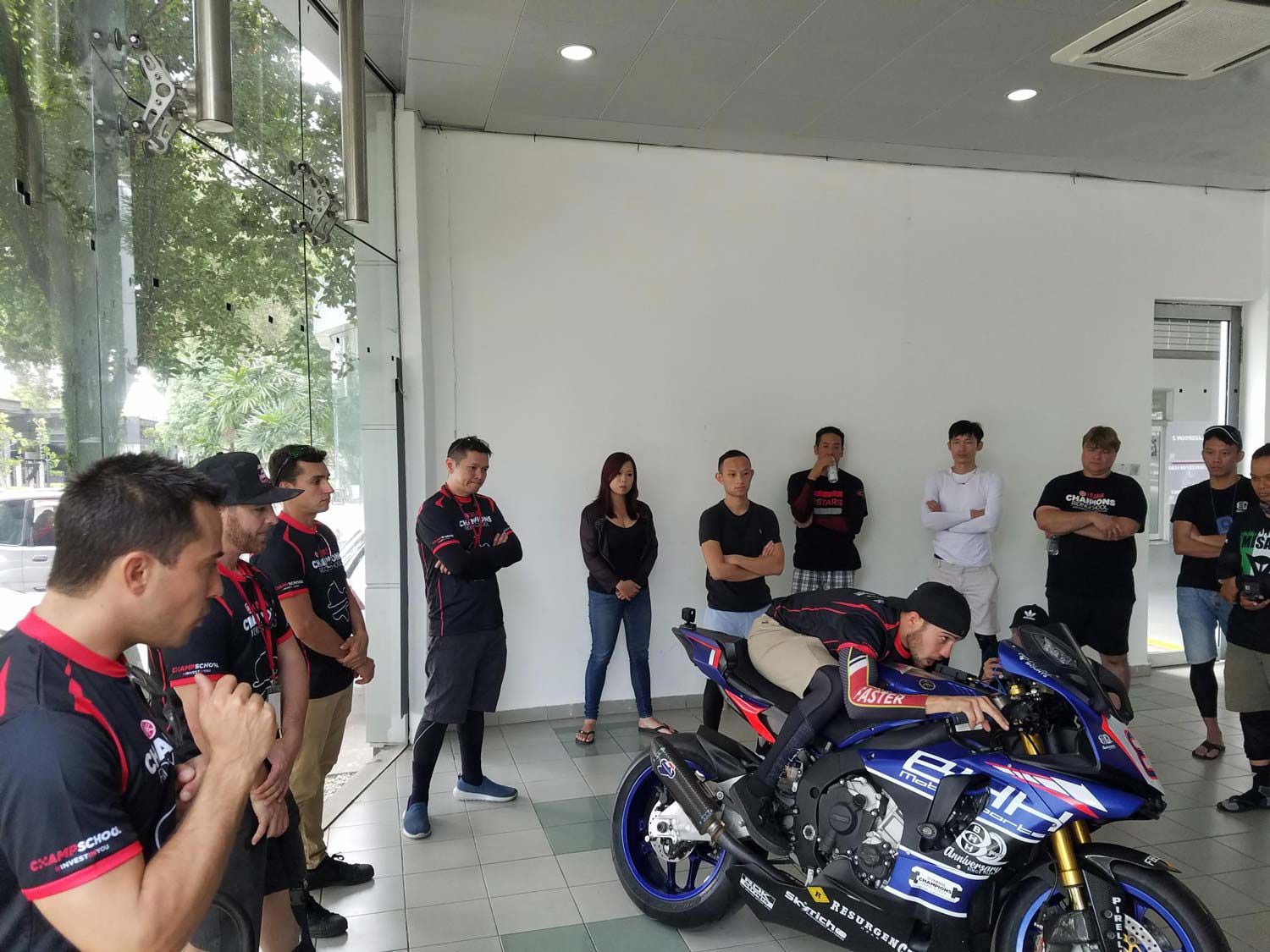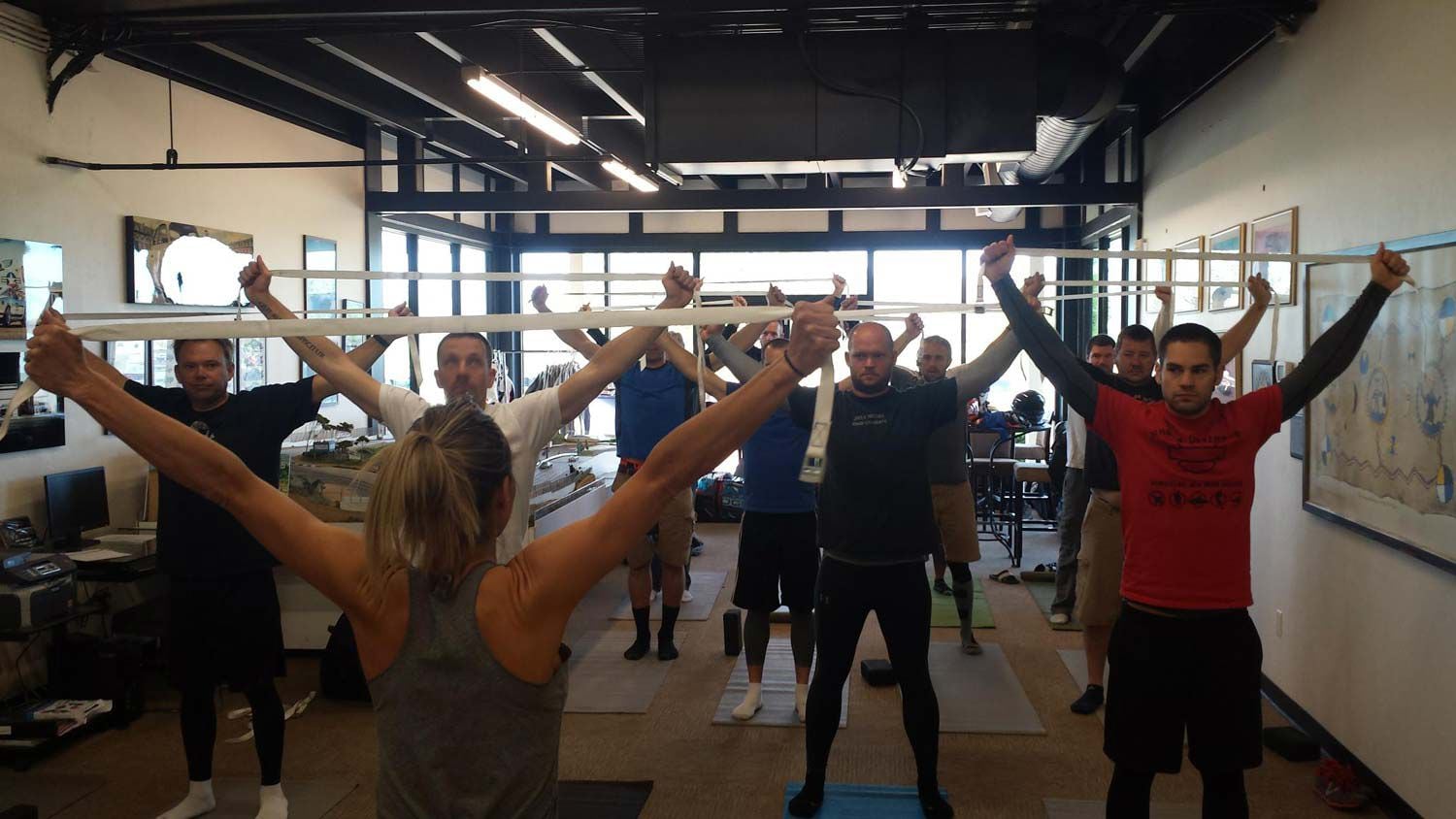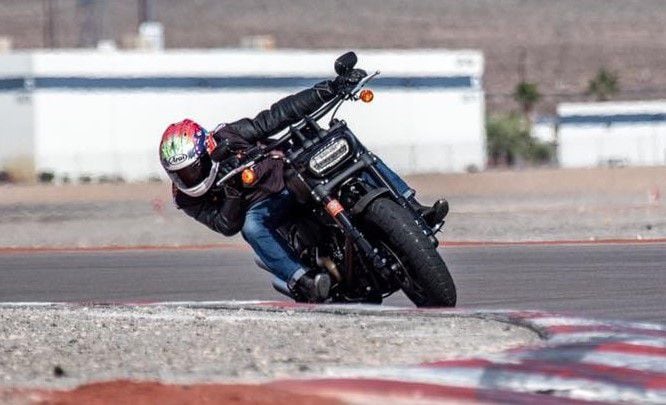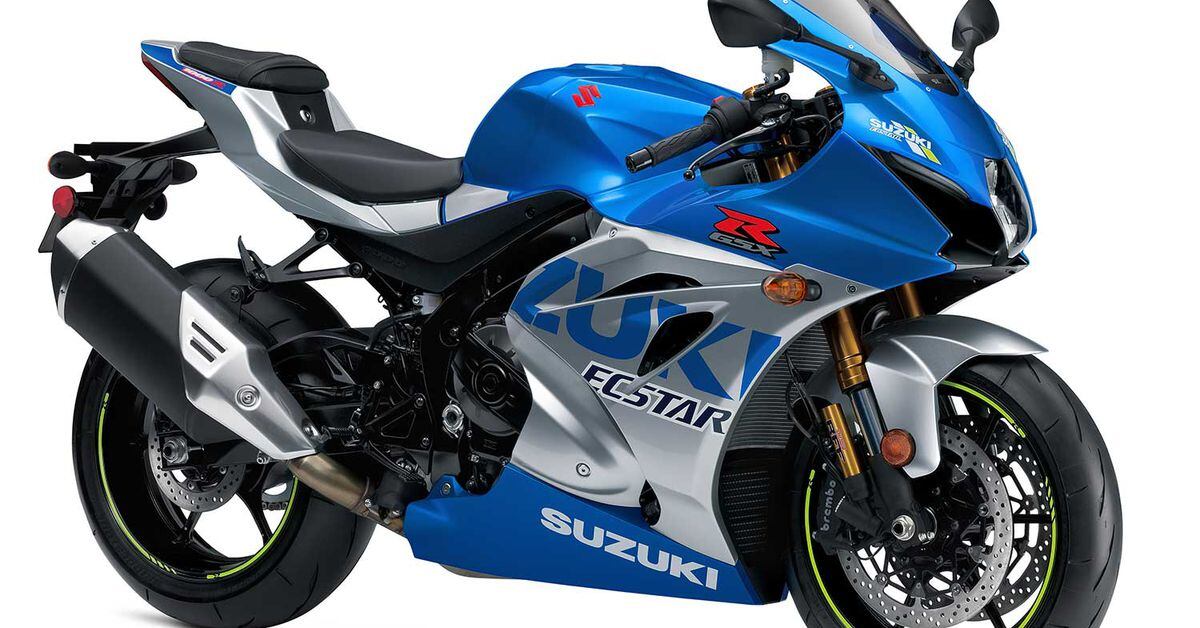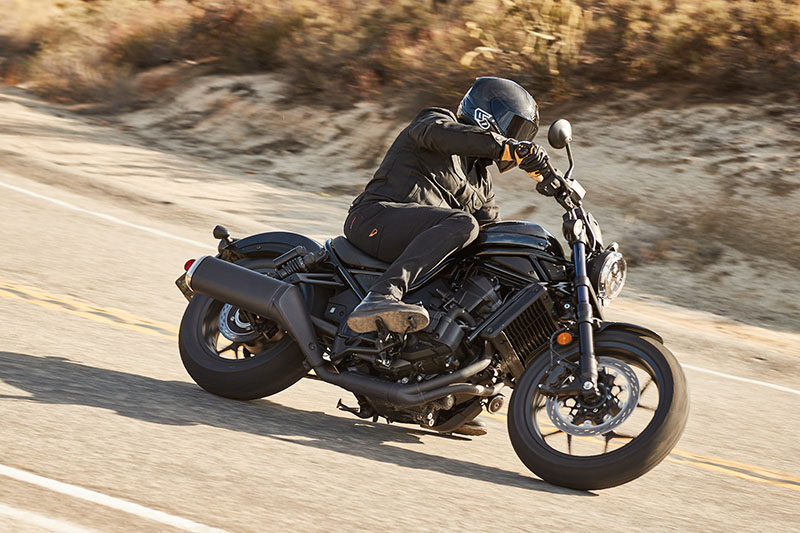How, where, and when a motorcycle rider places their body while on the track makes a huge difference in handling, speed, tire life, and lap times. (MotoGP/)This series is aimed at new-to-the-track riders in an effort to jump them over common pitfalls that lead to crashes. We have many students at YCRS who have never been to the track, and we do programs with Alpinestars, Yamaha USA, Young Presidents Organization, United States Marine Corps, and Legion of Speed that put us helmet to helmet with track first-timers. As their speed rises, small mistakes become more costly.
These articles are timely as the rejuvenation of motorcycling in America leads more and more riders to the safest place to enjoy any pavement-bound motorcycle: the racetrack. In short, if you want to get to the track or get back to the track, the next few weeks of articles will save you pain and expense if you wholeheartedly embrace the lessons.
Part 1: Body Position
Our ChampStreet group was gathered in the paddock area near Colorado’s High Plains Raceway’s turn 2 as instructor Mark Schellinger got ready to demonstrate a few things on his MT-10. It was raining. We all turned to watch a particularly loud Ducati that was participating in our ChampDay program enter turn 2.
When it became quiet enough to be heard, I said, “Riders, did you see that Duc rider sitting in the middle of the seat? He will crash soon if he doesn’t change his body position.” We then watched instructor Louis Ferrari wheel into turn 2 on his MT-10, intent on catching the Ducati before he crashed. Ten minutes later we learned that Louis didn’t catch him in time and he had crashed on the same lap we witnessed. This crash came immediately after instructor Chris Peris did a lecture and demonstration on body position to the ChampDay group.
It’s that clear. It’s that important. If you’re going to the track, it will behoove you to fully commit to the body position illustrated by your favorite modern roadracing hero. I’m guessing your hero has won a bunch of championships; those are the racers to imitate.
Why Body Position Matters on Motorcycles
We mimic our heroes’ body position while cornering because it allows us to run less lean angle at the same radius. Less lean angle “points” allows for more brake and throttle points to be used (see YCRS’ 100 Points of Grip video). Add in rain, new tires, non-track tires, cold tires, or worn-out tires—or trying to set your new personal-best lap time—and running less lean angle at the radius you need gains more and more importance.
We also mimic our heroes because it makes us safer around other riders: We tuck in while accelerating on the straights (chest on the tank) and we sit up as we brake (unbending at the waist and straightening our arms). If we aren’t tucking in and sitting up, the following riders have no idea when we are braking. If we aren’t tucking in and sitting up, we get taken out in the brake zone as the following rider collects us. If we aren’t tucking in and sitting up, we will have many, many close calls.
You must make a practiced study of your heroes’ body position, and the timing of the body movements. Freeze the video. Study the timing of their head drop, when they sit up. Don’t just watch with awe, watch with awe and the mindset of being instructed.
This is our first subject because good body position saves so much drama. Your bike turns better and you are communicating effectively with those around you. You are running the minimum risk (lean angle) possible for the radius. You will be safer and faster.
I’m all-in when I touch this bike, and part of that full commitment is body position because I can run less lean angle at my desired radius. (Etech/)Racetrack Body Position How-To
Here is a written guide to the basics of good racetrack body position and body timing; there are tremendous lessons being taught on this subject at the front of every national or world championship. Read this, watch that, and fully commit to body position.
- One butt cheek off the seat to the inside of the bike’s centerline while cornering.
- Move your butt to the spot described above prior to braking; you must learn to brake and downshift with your butt on the side of the seat for the upcoming corner. Note that you aren’t yet hanging off, your weight is still on the butt cheek that is on the seat. If you are struggling to downshift with your butt on the edge of the seat, your shift lever may be too low.
YCRS instructor (and WERA/N2 Endurance national champ) Eziah Davis at our Sepang school discusses and illustrates tucking in while accelerating with his butt preset for the next corner, in this case to the left. Small detail? No, vital technique. (Nick Ienatsch/)
- Move completely across the seat by doing a small squat between adjoining corners. Do not stop in the middle of the seat during transitions between connecting corners.
- Attempt to place your inside foot slightly over the edge of the footpeg with the ball of your foot on the end of the peg; this will vary with bike design. Our students on cruisers focus on keeping their feet on top of the pegs or floorboards to not drag their boots, for instance. Note that we have seen riders hurt their ankles when their feet contact the pavement and get dragged off forward controls.
- Drop your head into the corner by bending at the waist and allowing your inside arm to bend at the rate you want your bike to steer. Some corners require a quicker turn-in and we will drop our heads quicker to load the inside axis of the gyro, sometimes called the footpeg.
- Tuck in while accelerating on the straights and truly lie on the tank, relaxing, breathing, and thinking. Preset your butt to the side of the upcoming corner before you brake.
- Sit up on the brakes as a human brake light, but also to block some wind as a windbreak, raise your line of sight, and put yourself in a position to then drop your head into the upcoming corner.
- If your bike wiggles when you transition across the seat, you are pulling on the handlebars/clip-ons. Use your core to stabilize your weight when you squat across the seat between corners.
- Midcorner, your weight should be carried by your inside leg with your cheek on the seat and your outside thigh against the fuel tank—not your inside arm. Check your weight distribution by taking your left hand off the handlebar in left-hand corners, it should be easy. A key component is your inside knee out away from the bike so you can load the footpeg.
- Your head should be lowest on exit; this head drop offsets the acceleration forces that open your cornering radius. Many riders have trouble dropping their heads on exit if they don’t leave their knee out as the bike comes off the corner. That outstretched knee provides a base to take the load of the head drop.<br/>
Jenn Peris leads YCRS class in ChampBody after-ride stretching and yoga. Riders find huge body-position dividends in pre- and post-ride stretching, plus core strengthening. Dr. Matt Tolstoy runs ChampBody at our East Coast schools and focuses on the fitness that riders need most. (Nick Ienatsch/)
- Allow your hands to rotate on the grips so that your fingers are pointing to the outside of the corner. This “screwdriver grip” allows you to get your elbow out away from your body so that you can move to the inside of the bike’s centerline more freely.
- Stay committed to the inside of your bike as you accelerate off the corner, and that means leaving your weight on the inside footpeg. We’ve seen riders jump back to the middle too early and the bike runs wide very quickly. Again, not a big deal when you’re going slowly but a huge problem as your pace increases.
YCRS instructor and six-time MRA No. 1 plate holder Ryan Burke adapted full GP body position while lapping the Las Vegas track on Harley-Davidson’s impressive Fat Bob. Cruiser riders can find extra cornering clearance through body position. (Harley-Davidson/)
- All body movements must be smooth. They must sometimes be quick, but never abrupt.
- Be back off the fuel tank about 4 inches; riders too close to the tank often have trouble dropping their heads effectively on the exit. Staying back off the tank is helped by the realization that we will load our hands and arms while braking. We are not pinching the fuel tank while braking because we are never in the middle of the seat in the brake zone.
Body position flaws lead directly to crashes. Maybe not on your first day at a moderate pace in great weather, but eventually as the pace increases and grip deteriorates. I promise.
My articles are not aimed at the rider you are now, they are for the rider you can become. Valentino Rossi revamped his body position techniques when Marc Márquez arrived on the scene. Eddie Lawson speaks about his body position evolution when he got onto Honda’s NSR500 for the 1989 season. I’ve been racing since 1989 and cringe when I see my body position from those days. My point: Don’t stay married to your current riding approach, evolve through logical study of best practices on a roadracing motorcycle.
You might feel there are plenty of options at the track and that hanging off the bike is just one of them, but a 15-minute study of the best track riders in the world, country, or club should convince you that the vast majority are chasing the same body-position techniques. Get this right and safe speed will follow.
More next week!


